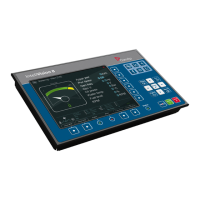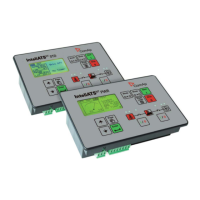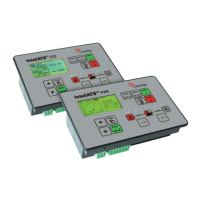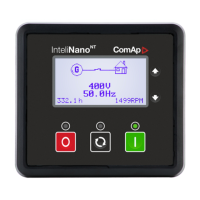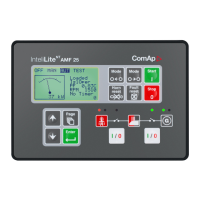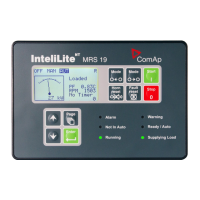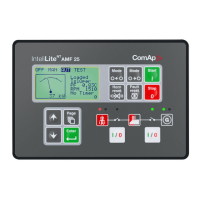6.19.3 Regulation control loops overview
Speed/frequency control loop
The speed/frequency control loop is active during the synchronization, when the gen-set frequency is
controlled to the same value as the mains or bus have, i.e. to achieve zero slip frequency.
Differential angle control loop
The differential angle control loop is active during the synchronization, when the “near to zero” slip
frequency has been successfully achieved and then the differential angle between generator and
mains/bus voltage shall be reduced to zero.
Power control loop
The power control loop is active during the parallel to mains operation. The recognition of parallel to
mains operation is done on the basis of the binary input MCB feedback. In MINT the setpoint
#SysLdCtrl PtM must be also set to BASELOAD.
Load sharing control loop
The load sharing control loop is active in MINT, whenever the GCB is closed and the binary input MCB
feedback is not active or the setpoint #SysLdCtrl PtM is in LDSHARING position.
Voltage control loop
The voltage control loop is active during synchronization (the generator voltage is controlled to the
same value as the mains or bus have) and during island operation in SPtM (the gen-set voltage is
controlled to the nominal voltage). During multiple island operation in MINT, the voltage control loop is
also running “in the background” of the VAr sharing loop (using P, I parameters multiplied by 0.1) to
maintain the voltage at the nominal level.
NOTE:
Since IC-NT SW v. 1.4.1 only the first controller (with the lowest address at the CAN has) active
voltage control loop. Other controllers are adapting voltage according to bus to the first one. All
controllers have active VAr Share regulation loop.
Power factor control loop
The power factor control loop is active during the parallel to mains operation. The recognition of
parallel to mains operation is done on the basis of the binary input MCB feedback.
VAr sharing control loop
The VAr sharing control loop is active during multiple island operation in MINT application.
6.19.4 PI regulation adjustment
The exact adjustment of a PI loop always depends on the engine and generator characteristics.
However, a general rule can be followed in the beginning of the adjustment process:
Prepare the system for adjustment, i.e. set the limits for related alarms temporarily to values
which will disable the alarms, set the synchro timeout to the maximum value, etc.
Adjust the gain to 5% and integration to 0%.
Switch the gen-set to MAN mode, start it and put it into the operation phase, where the
appropriate regulation loop is active.
Increase the gain slightly until the controlled quantity starts to oscillate. Then put it back to
approx. one half of the value where the oscillations started.
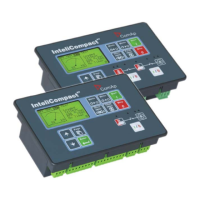
